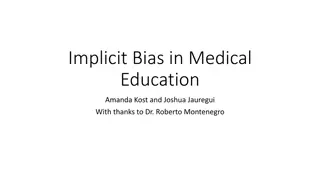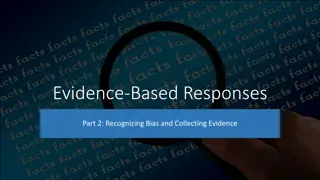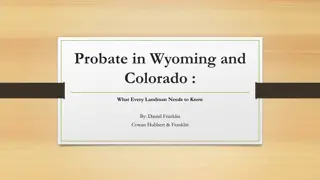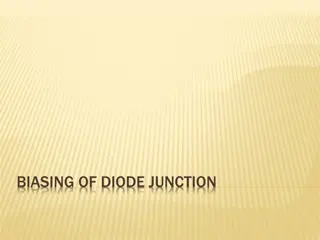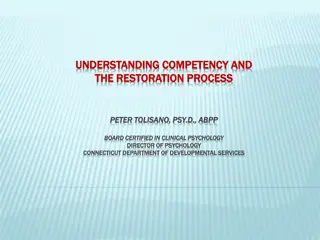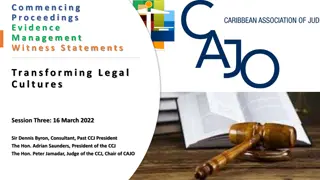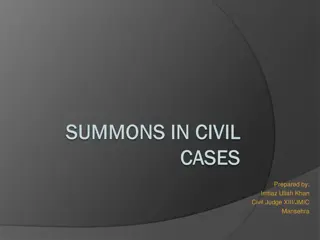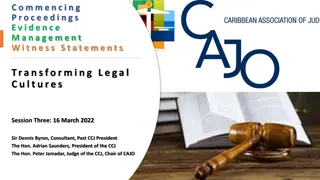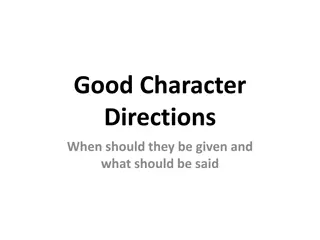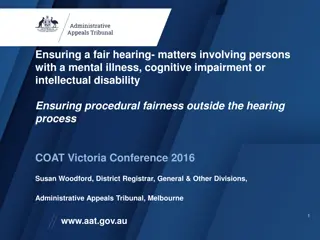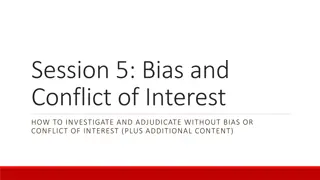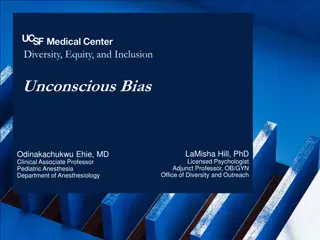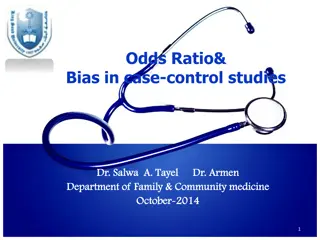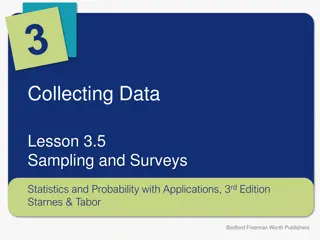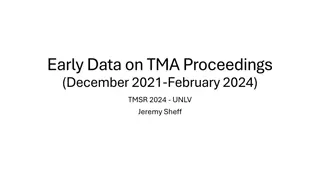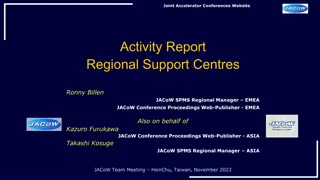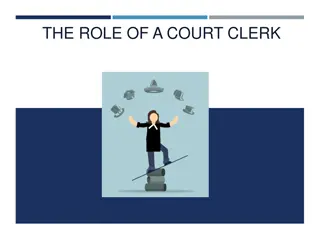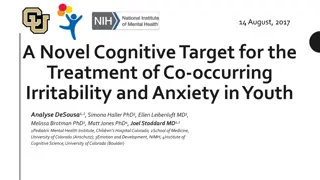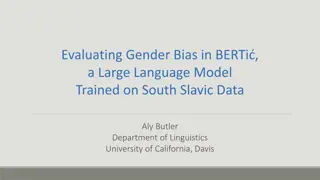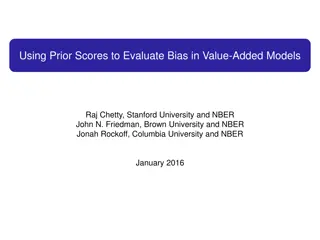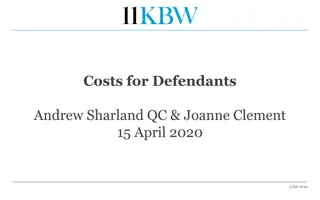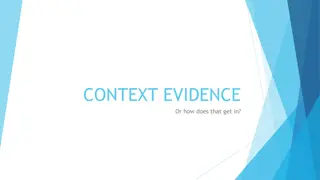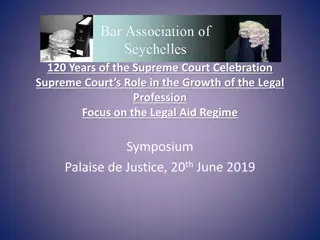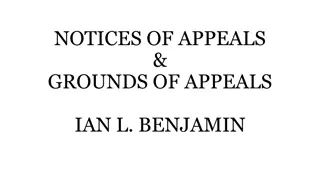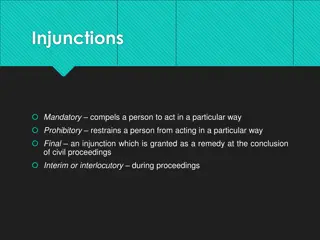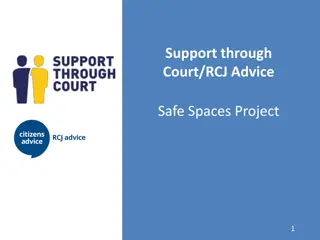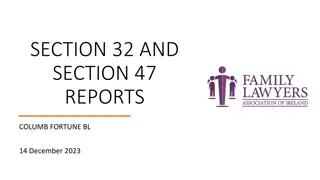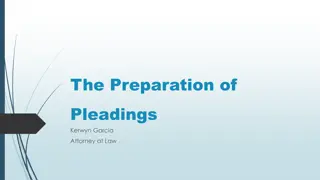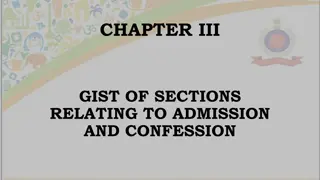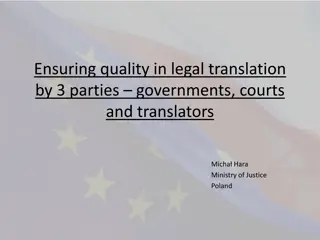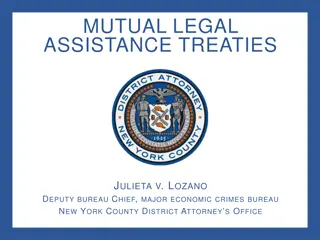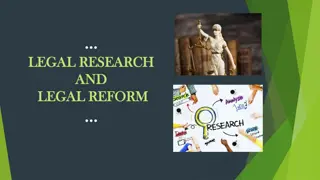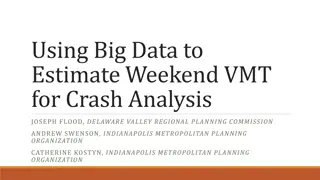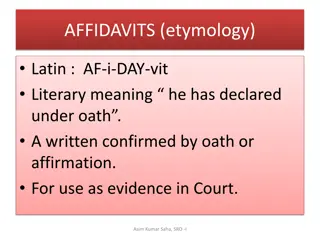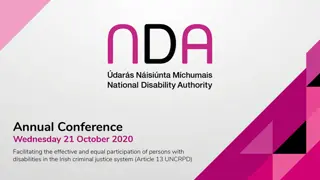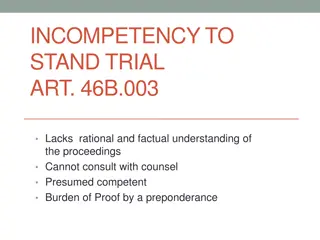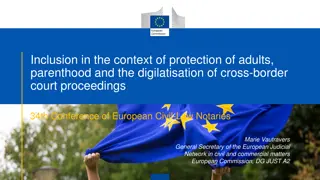Understanding and Utilizing Bias in Legal Proceedings
Exploring the complexities of bias in legal settings, this content provides insights on identifying, addressing, and leveraging bias in litigation. From defining various forms of bias to strategies for cross-examination and case presentation, it equips legal professionals with practical knowledge to navigate bias challenges effectively.
Download Presentation

Please find below an Image/Link to download the presentation.
The content on the website is provided AS IS for your information and personal use only. It may not be sold, licensed, or shared on other websites without obtaining consent from the author. Download presentation by click this link. If you encounter any issues during the download, it is possible that the publisher has removed the file from their server.
E N D
Presentation Transcript
PPMS Part 2 NOW THAT WE HAVE IT, HOW DO WE USE IT?
Overview Goals Getting it in Strategies Bias Crosses Making a record
PPMS Trial Goals and Strategies Get the case dismissed! Gov t doesn t want to sponsor problematic cops Discovery and Brady violations Get sanctions Put officer witnesses on edge Educate judges and juries WIN THE CASE!
Getting It In What is bias? Bias refers both to a witness personal bias for or against a party and to his or her motive to lie. Longus v. United States, (quoting McCloud v. United States, 781 A.2d 744 (D.C. 2001). Prejudice against your client for any reason Prior dealings/arrests Gender bias Racial bias Social-economic status bias Bias against the community Motive to curry favor bias Corruption bias In sum, bias can be many things
Getting it In Litigation Bias Crosses for Cops Bias is always a proper subject of cross-examination. Brown v. United States, 683 A.2d 118, 124 (D.C. 1996). The Sixth Amendment right to confrontation is violated only when the court precludes a meaningful degree of cross-examination. Longus, 52 A.3d at 850. In determining what is meaningful cross-examination, we have been solicitous of a defendant s right to effectively expose to the jury the facts from which jurors . . Could appropriately draw inferences to the reliability of the witness. Id. (quoting Lewis v. United States, 10 A.3d 646, 654 (D.C. 2010). It is not enough that the possibility of bias be mentioned, counsel must be permitted to present the nature and extent of the bias. Longus at 851 (quoting Davis). Extrinsic evidence, evidence from which the jury can infer bias, may be presented not only through cross examination but also by the introduction of extrinisic evidence. Defense entitled to cross examine and introduce extrinsic evidence of the fabricated confession because the defense had a genuine belief or a well-reasoned suspicion that Bethea had exhibited corruption bias. Coates v. United States, 113 A.3d 564, 575 (D.C. 2015)
Getting It In Cop Crosses Common types of cop-cross bias for which extrinisic evidence is permissible: Motive to Curry Favor, the witness' subjective belief of the potentially beneficial effects that his testimony may have upon his own situation Lewis v. United States, 10 A.3d 646, 653 (D.C. 2010). Corruption Bias - the willingness to obstruct the discovery of the truth by manufacturing or suppressing testimony or otherwise to thwart the ascertainment of truth in a judicial proceeding.
Motive to Curry Favor Bias Examples: Pending case bias Harassment Civil Rights Violations Use of Force (especially if in instant case) Criminal Investigation Cases in which USAO has not yet sent a letter of declination) Misconduct in this case. E.g. BWC violations, UFIR, brutality, policy violations
Corruption Bias Adverse Credibility Findings Lying on the stand (hard to prove) Lying while under investigation Requires close reading of investigations
Getting It In - Example In short, the trial court's ruling was based on the erroneous belief that cross- examination about the fact of a pending investigation, without allowing defense counsel to probe into and present extrinsic evidence of the underlying facts, satisfied appellant's right under the Sixth Amendment to expose all of Detective Brown's potential biases relevant to his testimony in appellant's trial . . . . It would have permitted the jury reasonably to infer not only that Detective Brown was motivated to curry favor with the government because he was under criminal investigation, but also that he was not a trustworthy witness as shown by his prior corrupt behavior in the Club U homicide investigation. As in Smith, defense counsel was entitled to impeach [the detective's] credibility with both the fact and the subject matter of the investigation. Longus v. United States, 52 A.3d 836, 853 54 (D.C. 2012)
Recent Case: United States v. (Wonell) Jones, No. 18-CF-610. At Mr. Jones s trial, defense counsel sought to use the group photograph with the skull-and- cross-bones-emblem-bearing banner to cross-examine the testifying GRU members about what counsel described as their ends-justify-the-means mentality to make arrests and get convictions. Counsel also sought to admit the group photograph as extrinsic evidence of bias. Sustaining the government s objection, the trial court prohibited the defense from doing either. The rationale for the court s ruling was twofold: (1) there was no official finding of misconduct in relation to the group photograph or the banner; and (2) because the jury might perceive the photograph as evidence of the GRU members racism, the prejudicial effect of the photograph outweighed its probative value. We conclude that neither rationale supported a ruling disallowing the defense from asking the GRU officers about the group photograph or admitting it into evidence. Although the government proposes that we affirm based on our own assessment of the probative value versus prejudice of the group photograph, we are unable to do so because we cannot conclude as a matter of law that the probative value of the group photograph (or any questions about the photograph) was substantially outweighed by a danger of unfair prejudice. Nevertheless, because we conclude that the trial court s rulings were harmless in light of the other evidence in the case, we conclude reversal is not warranted on bias grounds.
Litigation Issues with Police Misconduct Early Rosser/Brady Letters Preliminary Hearing Subpoenas and Disclosures Motion to Compel Protective Orders Summaries vs. Source docs Suppression Hearings early disclosure Trial Motion to Permit Bias Cross Disclosing bias cross in advance?
Protective Orders Super. Ct. Crim. R. 16(d)(1), the good cause requirement [G]ood cause is established on a showing that disclosure will work a clearly defined and serious injury . . . . The injury must be shown with specificity. Broad allegations of harm, unsubstantiated by specific examples or articulated reasoning, do not support a good cause showing. . United States v. Wecht, 484 F.3d 194, 211 (3d Cir. 2007) Where a party has done little [a]part from generally noting the existence of [purportedly] confidential third party information . . . [the party] has not asserted, much less shown, specific harm or prejudice that it expects will arise from disclosure of any particular documents produced in discovery. Foltz v. State Farm Mut. Auto. Ins. Co., 331 F.3d 1122, 1130 (9th Cir. 2003) Practice in Superior Court diverges from the Law I want to get you the material as quickly as possible This does not impact your ability to represent your client I ll grant it on a temporary basis, and you can raise a challenge to it at a later time
Protective Orders Protective orders limit defense s ability to share police bias and credibility information with those outside of the defense team, including your client Common limitations Cannot share outside of defense team (those assisting defense in this case) Cannot share civilian names and other PII Cannot retain in database/must return or destroy at conclusion of case Other considerations Materials discussed during public proceedings not subject to the protective order Defense may move to modify protective order Case by case basis Some judges routinely deny J. Ryan, J. Raffinan, J. Lopez Some grant modifications: J. Okun, J. Campbell
Bias Cross Getting Ready to Cross Initial Considerations Theory of the Case Plant? Fabrication? MisID? Others? Theory of the Witness Crediting this witness Crediting certain things and not others Collusion or Corruption
Bias Getting Ready to Cross Structuring the cross Consider building up to bias cross Starting with bias impeachment difficult, draws objections Use whole chapters and/or headlines to signal you re going to cross on bias Be prepared for your cross to be limited, gutted, or even cut altogether Moot, moot, moot! Cops are tricky. Have documents tabbed and ready to go Get in and get out quickly
Cross-Examination at Trial Common Obstacles Will give self-serving versions of events Will claim findings were different than documents Will claim misconduct has been overturned or thrown out Will deny knowledge of investigations Ways to Overcome: Moot, moot, moot! Litigate and get source documents Investigate Giglio demands Review transcripts
Making a record if denied bias cross Extremely important to make a record--denying or limiting bias cross can be reversible error Longus, Coates; see also (Wonell) Jones. File Motion to Permit Bias Cross Examination Thing strategically about when to file Important to get cross examination into the record Can try to do ex parte, See Bowman. Explain why the cross matters, and why extent of bias is important If Judge does not listen, file in the Court record
Takeaways Police misconduct and bias information goes well beyond PPMS Early and often requests for information Be broad in search GET SOURCE DOCS! READ SOURCE DOCS! INVESTIGATE SOURCE DOCS! Litigate issues Be aware of your forum Tailor cross to theory Guns and drugs cases If you have questions, ask!




